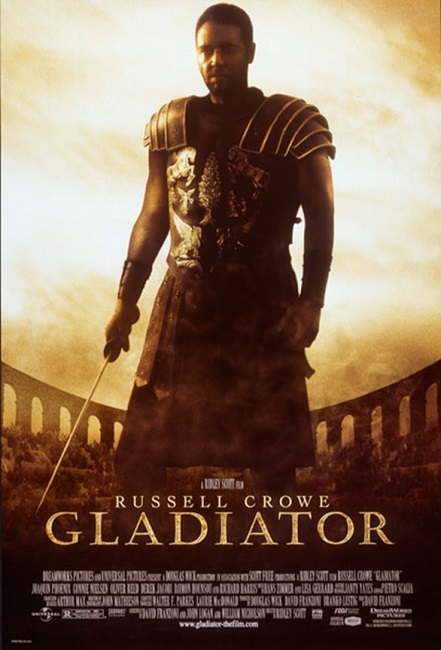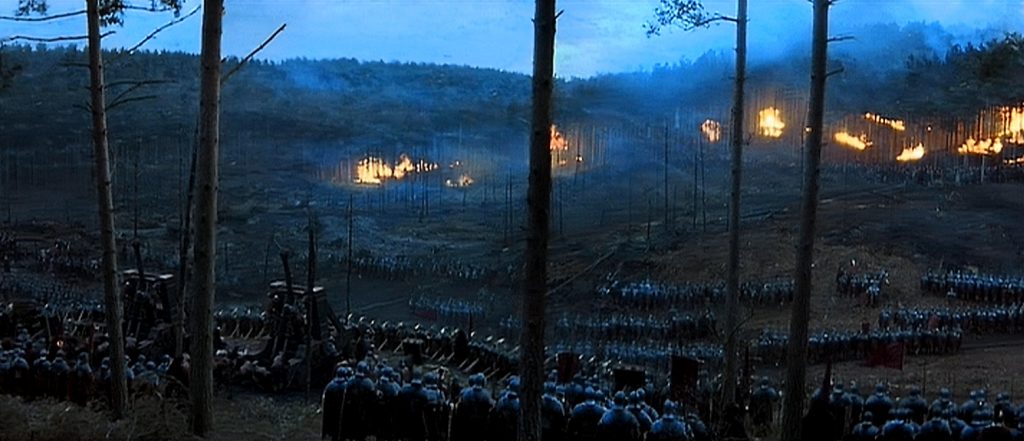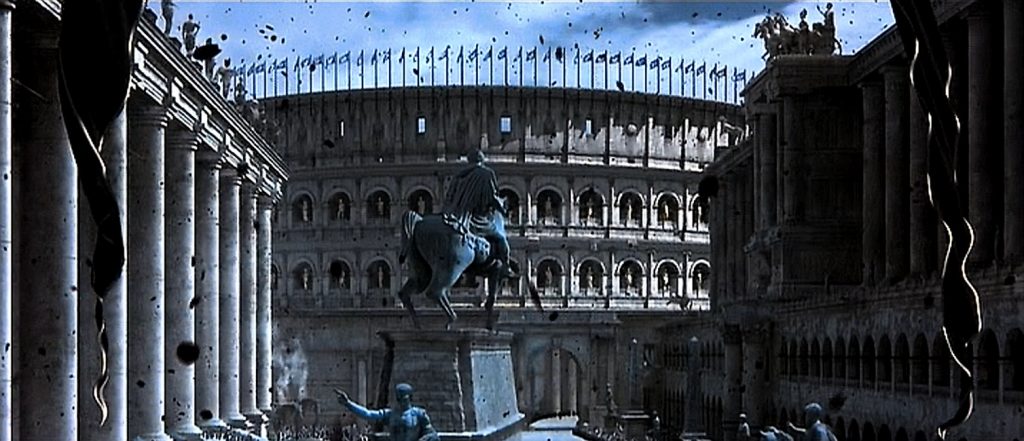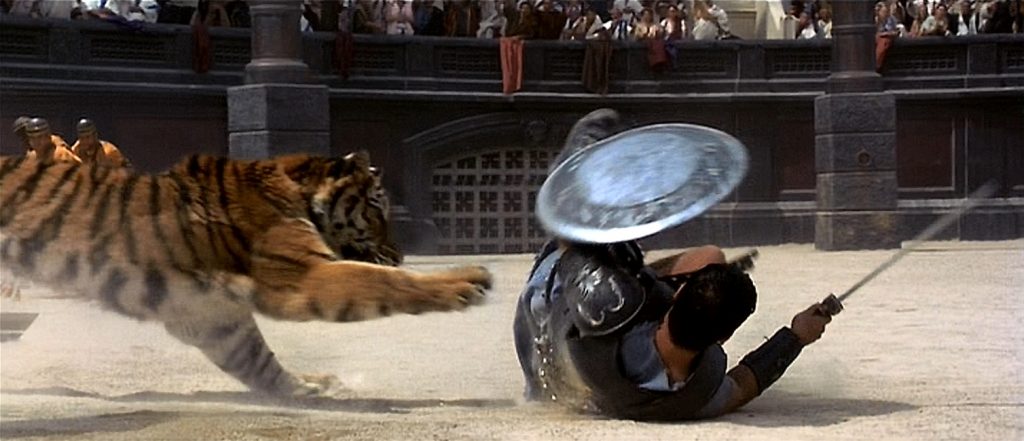



Gladiator – 2000 (WINNER)

This movie had two kinds of special effects, ones that you can easily see, and ones that you don’t necessarily notice. Both categories were handled expertly. There were both practical effects and a fully stocked cadre of digital effects. All of them were combined in creative and innovative ways to create a picture of the Roman Empire at the height of its power. Director Ridley Scott gave audiences visuals that had never before been attempted on such a grand scale.
The ones you can see were pretty spectacular. The film opens with a great battle sequence in a field in Germania, where the true might of the Roman War Machine was brilliantly displayed as never before. All the fights in the gladiatorial arena were thrilling to watch, especially the one with the tigers. The Battle of Carthage sequence was also fantastic in its realistic violence and gore.
But it was the visual effects that you might not notice that really made Gladiator stand out as being truly deserving of the Oscar it took home. The sequence where Maximus first enters the great Colosseum of Rome was fantastic! There was an amazing shot where the camera circles the gladiators in a twenty-eight second, five hundred forty-degree panorama. Then there was the crowd and the Colosseum, itself. The Colosseum was only partially constructed with only one end of the arena, and only one story. The full structure teeming with the cheering spectators was filmed in sections, then duplicated and pieced together in a computer. Motion capture was used to film and place individual people all over the digital image. The actual Colosseum in Rome was photographed, and the real patina and stucco was projected onto the digital structure. The realistic result was flawless! It looks like they really built the whole building and filled it with a horde of extras. There were also a few shots in the film of the Colosseum from the outside which were really awesome. I’ve been to the real thing, and this reconstruction is amazing.
Another effect that you might not know was in there is the character of Proximo. Oliver Reed, the actor that played the former gladiator, died during the filming of the movie. In order to save the movie, a stand-in actor was used to finish filming his scenes. In the wide shots, Reed’s face, taken from extra footage of him, was digitally placed onto the body-double’s neck. In the close-up shots, more previous images were used and digitally manipulated to fit the remaining scenes. I would never have known if I hadn’t done my research. It was very convincing and so important to the film.
This was a movie that took home a total of five Oscars, all of which were deserved, but the one for Visual Effects was particularly well-earned. But with his incredible track record of bringing us movies with awesome visuals, like Alien, Blade Runner, and Legend, we should expect no loss of Ridley Scott. Well done!